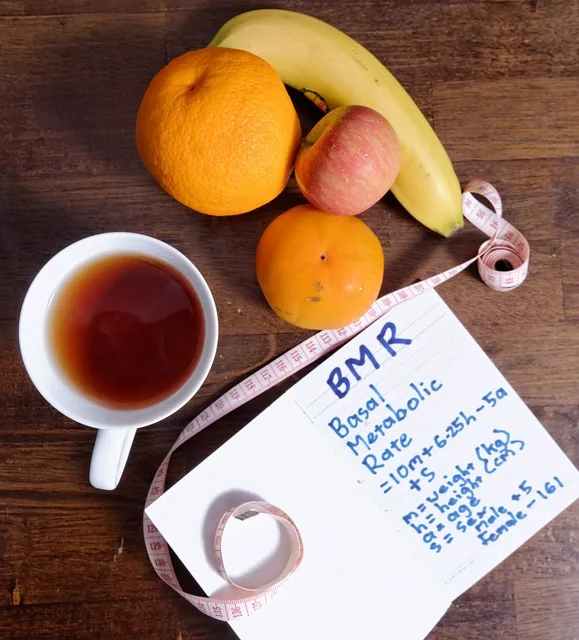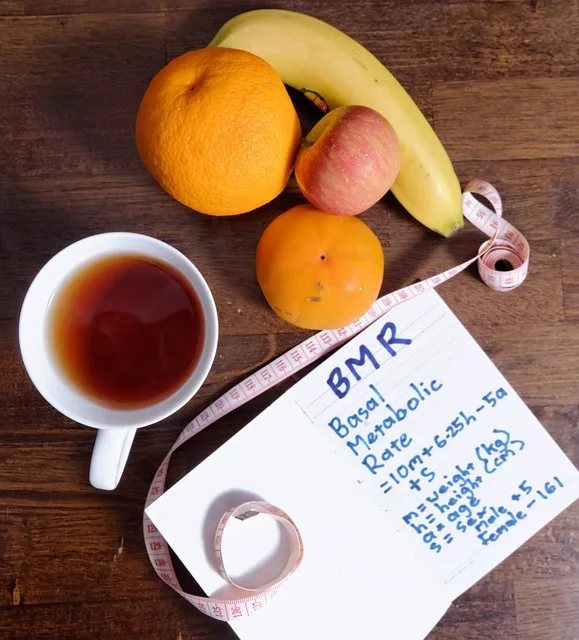10 Fitness Essentials necessary to understanding exercise science to eliminate the common conjecture in fitness programming, it is necessary to understand these 10 fitness essentials concepts.
This article contains what I consider to be the most important concept any fitness enthusiast should understand.
You don’t need to be a fitness expert to follow an exercise program, it’s essential to have a basic understanding of exercise science.
10 Fitness Essentials Concepts
The 10 Fitness Essentials necessary to understanding exercise science are listed below:
- Resistance Training
- Hypertrophy
- Types of Movement
- Range of Motion
- Types of Exercise
- Types of Muscle Contraction
- Breathing
- Components of a Movement
- Fitness Principles and Concept
- Other Important Fitness Concepts
1. Resistance Training
More commonly referred to as strength training or weight training, resistance training refers to exercise in which a person uses some type of muscle contraction to act against external resistance. External resistance can vary from free weights to machines, or even the own body weight.
When you lift weights at the gym to get stronger or bigger or more toned, you are doing resistance exercises.
Sometimes you’ll hear the term “strength training” associated with lifting weights. Technically, it is incorrect to refer to resistance exercise as strength training. Rather, strength training would more accurately be described as resistance exercise that builds strength.
What are the Styles of Resistance Exercises?
- Olympic Lifting: Where athletes lift weights overhead like you see in the Olympics.
- Powerlifting: A competition where athletes perform squats, dead lifts and bench presses.
- Weightlifting: A sport where athletes lift heavy weights—usually less than six reps.
Why do resistance exercises?
There are many benefits of resistance training. It is commonly used as a way to develop muscle strength, endurance, and size. External resistance can be dumbbells, rubber exercise tubing, your own body weight, bricks, water bottles, or any other object that causes the muscles to contract.
Resistance training has many other benefits, such as increased the bone density, improved the mobility, increased the metabolic rate, and improved the body composition.
It builds muscle strength and tone. Humans lose 5 pounds (2.27 kg) of muscle every decade after the age of 30.
The number of muscle fibers decreases with age. By age 30 to 70 we can lose more than 25% of the type 2 muscle fibers in the bodies (type 2 fibers are the strength fibers). Resistance exercise can slow or even reverse the aging process by building muscle and strength.
It has been shown to build bone. Osteoporosis, a condition of accelerated bone mineral loss that leads to fractures, can be a serious disease, especially in women (though men also get it), and research on resistance exercise suggests it also build bone occurs in the elderly.
There is some evidence that resistance exercise helps reduce moderate to high blood pressure.
Resistance exercise can increase metabolic rate, which is an important factor in maintaining body weight.
It is never too late to start, in a study of elderly men and women (average age 87), who lifted weights three times per week for 10 weeks, there was an 113% increase in strength. The improvement in strength also enabled the elderly participants to walk faster (12% compared to before the study), climb 28% more stairs, and increase the muscle mass in their thighs by more than 2.5%.
2. Hypertrophy
In the context of resistance training, hypertrophy refers to the enlargement of muscle tissue.
Hypertrophy is a common result of resistance training. Simply put, when we engage in resistance training, you create microtears in muscle tissue. The body responds to this by repairing larger and stronger tissue to better handle resistance in the future.
To maximize hypertrophy, the NSCA (National Strength and Conditioning Association) recommends these guidelines:
- Start by setting the 1 RM (rep max) for the muscle. This is the maximum weight you can lift for just 1 rep (which will be different for each muscle group and will change over time). Use that number to determine the progression of the weight.
- Note: As strength increases, your 1RM will change. Adjust the weight accordingly during each workout.
If you’re interested in increasing muscle size, resistance training is the most effective way to achieve that goal.
Types of muscle hypertrophy
There are 3 basic types of muscular hypertrophy:
1. Myofibrillar hypertrophy
This is an increase in the number of myofibrils, which are long strands in the muscle that help it to contract. When myofibrils grow, the muscles become stronger and denser.
2. Sarcoplasmic hypertrophy
This refers to an increase in the amount of sarcoplasmic fluid to the muscles, or fluid that is filled with a variety of energy-rich substances.
3. Myostatin-related muscle hypertrophy
This is a rare condition that involves a significant reduction in body fat and an increase in muscle size—up to twice the normal amount of muscle. People with this condition also have increased muscle strength compared to the average person.
Note: Research shows that just six weeks of high-volume resistance training can lead to sarcoplasmic hypertrophy by up to 23% of the increase in skeletal muscle fibers. 1
3. Types of Movement
Muscle flexion
Bending of the joint so that the angle is less. Starting with a straight arm and bending at the elbow is an example of muscle flexion.
Muscle extension
Straighten the joint so that the angle increases. Starting with the elbow bent and straightening the arm is an example of a muscle extension.
Hyperextension
To increase the angle of a joint beyond its normal function.
Abduction
The movement of a segment of the body away from the midline of the body. Raising the arm to the side is an example of abduction.
Adduction
Movement of a segment of your body towards the midline of the body. Starting with one hand and reducing it is an example of addition.
Rotation
The rotation of a segment of the body around an axis. Turning your head to the side is an example of rotation.
Internal rotation
Rotation away from the midline of your body.
External rotation
Rotation towards the midline of your body.
Eversion
Turning a part of the body outwards. An example of this is turning the sole of the foot outward.
Inversion
Turning a part of the body inward. An example of this is turning the sole of the foot inward.
4. Range of Motion (ROM)
Range of motion (ROM) is the full range of motion capability of a joint. It is usually measured from full force to full extension. Optimal ROM will vary from person to person and may be changed due to injury. ROM plays an important role in exercise, and most movements should be performed throughout optimal ROM.
Range of motion (ROM) is a measure of the amount of motion around a specific joint or body part. This is often measured during a physical therapy evaluation or during treatment. Other impairments that may be measured by your physical therapist include strength, gait, flexibility, or balance.
Types of Range of Motion
Three primary types of exercises specific to ROM:
- Passive range of motion is typically exercised on a joint that is inactive. A physical therapist may use this exercise on a client who is paralyzed or unable to mobilize a specific joint. This type of exercise can help prevent stiffness from occurring, during this exercise, the patient does not make any movements while the therapist stretches the patient’s soft tissues.
- Active-assisted range of motion exercises are more progressive, intended for the client to perform movement around the joint with some manual assistance from a physical therapist or from a strap or band. These exercises can often feel painful, and your muscles can feel weak, increasing ROM with these exercises should be a gradual advancement.
- Active range of motion exercises are highly independent, performed entirely by the client. The physical therapist’s role may simply be to provide verbal cues.
5. Types of Exercise
Isolation exercise
The isolation exercises focus on the movement of a joint. This is done as a way to increase the focus on a single muscle while eliminating any unwanted aids to the movement.
The dumbbell hammer curl is an example of an isolation exercise, as the elbow joint is the only joint moving.
Compound exercise
The compound exercises are movements that involve the use of two or more joints. These movements use one or more muscle groups at a time, allowing for significantly greater resistance and variety.
The squat is an example of a compound exercise because the hip, knee, and ankle joints all work together.
Functional exercise
Designed to mimic the activities people face in everyday life, these exercises are especially useful for athletes, the elderly population, and people recovering from injuries. Appropriate functional exercises will vary greatly depending on the individual.
6. Types of Muscle Contraction
Concentric
Concentric contraction occurs when muscle fibers shorten due to muscle tension.
Exercise application
During traditional resistance training, the dominant and assistant movers work together to produce a concentric contraction to overcome an external resistance.
Eccentric
Eccentric contraction occurs when muscle fibers lengthen when muscle tension is created.
Exercise application
During traditional resistance training, the major and assistant movers work together to produce an eccentric contraction to reduce or control external resistance.
Isometric
Isometric contraction occurs when muscle fibers remain stationary, creating tension.
Exercise application
During traditional resistance training, the prime and assistant movers will momentarily produce an isometric contraction during the transition from concentric to eccentric or from eccentric to concentric. The stabilizer muscles also produce an isometric contraction to maintain stability throughout the movement.
7. Breathing
It’s important to pay attention to your breathing during resistance training. It is generally best to exhale during the concentric part of the movement and inhale during the eccentric part of the movement.
During isometric exercises, just continue to breathe while thinking about the exercise.
The easiest way to determine when to exhale or inhale is to remember to exhale when you’re applying force and inhale when you’re holding the weight.
Whenever you move an object up against gravity, you are applying a force. This means that whenever you are propelling yourself or an object upwards, you must exhale; Whenever you are lowering yourself or an object, you must control the resistance downward and inhale.
8. Components of a Movement
When you perform a movement, your muscles work together in different ways to produce that motion.
From typing on the keyboard to performing a backflip, every movement requires precise and specific coordination of muscles throughout the body to be successful. When exercising, knowing the different roles played by muscles will go a long way toward maximizing the training effects of any exercise.
Prime mover
While most movements involve the use of multiple muscles, a single muscle typically produces most of the force against external resistance.
In traditional resistance training, the prime mover is the muscle that produces the concentric action. This muscle is also called an agonist. When doing push-ups, the pectoral (chest muscles) will be considered the prime mover.
Assistant movers
These provide additional force and assist the prime movers in producing a movement. During certain movements, an auxiliary mover may switch to being the prime mover at some point in the ROM. During push-ups, the triceps serve as the auxiliary movers, but are the prime movers at the top of the ROM.
Antagonist
It is the muscle that produces the opposing force for a given movement. While the agonist produces a concentrated action, the antagonist produces a singular action. The agonist and antagonist muscles often work in pairs. The eccentric action of the antagonist muscles is important because they help maintain control and stability during movements.
During the push-up, the posterior deltoids, rhomboids, trapezius, and biceps all contract eccentrically to oppose the prime and assistant movers.
Stabilizer
Incredibly essential to movement, stabilizer muscles essentially hold bones and parts of the body in place while other muscles work to produce movement. To maintain stability, the stabilizer muscles contract symmetrically.
During a push-up, all core muscles contract isometrically to maintain the stability of the spine during the movement.
9. Fitness Principles and Concept
The following are essential principles that should be followed as closely as possible. Whether you are a novice or a professional, following these principles will have a higher chance of success.
Specificity
The specificity principle states that the body will adapt specifically to the type of exercise you participate in. The more specific the goal or skill, the more specific the training should be. For example, a marathon runner needs a high level of aerobic endurance.
Activities such as long-distance running, cycling, and swimming are beneficial because they help develop aerobic endurance. On the other hand, heavyweight training also won’t translate because it doesn’t focus on aerobic endurance.
Consistency
For most people, consistency is the most important factor in determining the success of a fitness program. While the body is great at adapting to stress, the opposite is true as well. Commonly known as the “use it or lose it” principle, the body will fall back if you don’t provide it with enough stress in the form of exercise. It only takes 10 days for muscles to atrophy and lose a significant amount of their aerobic capacity.
Consistency is also essential because, ideally, exercise should be a part of the lifestyle. Most people aren’t passionate about exercise, so finding a routine that’s manageable but consistent is essential to making it work. It’s easy to make excuses and skip training. I have repeatedly seen how an inconsistent diet can quickly turn from exercise to a long absence. Over time, a consistent program should incorporate itself into the life.
Efficiency
When it comes to improving the fitness, in most situations you should emphasize quality over quantity. It is important to maximize the time to exercise.
Using programs like HIIT (high-intensity interval training), you can get more work done in a 20-minute workout than an hour of traditional training. It helps to eliminate time as a hindrance. It’s essential to work as hard as you can with the least amount of rest in a short amount of time.
Progression
As I mentioned earlier, you benefit from exercise as your bodies have to adapt to new stressors and stimuli. If you don’t introduce new stressors, the body has no need to adapt and can therefore withdraw. This is often the cause of the dangerous plateau. The principle of progress, or progressive overload, states that you must continually and continuously push ourselves so that your bodies can get used to progress.
Rest and recovery
Rest and recovery are commonly overlooked when developing an exercise program. When you exercise, you put stress on the body, breaking it down a bit. While resting, the body adapts by making itself stronger. If you do not give yourself time to recover, exercise begins to follow the law of diminishing returns.
Too little rest can lead to overtraining, which can lead to physical regression and injury. Optimal rest time varies based on the current fitness level as well as activity, but most people should have at least two rest days per week.
10. Other Important Fitness Concepts
Plateau
Sometimes you reach a point in an exercise program where, no matter how hard you try, you can’t make any progress. This is often referred to as a plateau and is usually a sign that you need to change things up.
Periodization
Periodization is a method of converting a fitness program into set intervals. Often, each cycle has its own set of specific goals. This is a great way to fight a plateau, because you never stick with one training method for too long.
To give an example, if my end goal is to add 10 pounds (4.54 kg) of muscle and lose 10 pounds (4.54 kg) of fat, then a periodic program would be most efficient. The two goals conflict greatly, and it will be difficult for both to add 10 pounds (4.54 kg) of muscle and lose 10 pounds (4.54 kg) of fat using the same program. With a periodic schedule, I would spend 8 to 12 weeks focusing only on building muscle. Once I’ve added 10 pounds (4.54 kg) of muscle, I’ll focus on a fat loss program.
Plyometrics
It is a form of training that uses a stretch shortening cycle. In the strictest sense, it refers to exercises performed so explosively that they rely on your body’s production of elastic energy. Often, power exercises such as squat jumps and burpees are mistakenly called plyometrics. While they are strength exercises, they don’t quite fit the true definition.
Overtraining
Overtraining occurs when a person exercises too much, gets too little rest, or a combination of both. When designing an exercise program, it’s important to consider the current situation. While progress is necessary, it must be gradual. Symptoms of overtraining include increased bruising, persistent pain, unusual tiredness and irritability.
- RESEARCH ARTICLE: Muscle fiber hypertrophy in response to 6 weeks of high-volume resistance training in trained young men is largely attributed to sarcoplasmic hypertrophy. Cody T. Haun, Christopher G. Vann, Shelby C. Osburn, Petey W. Mumford, Paul A. Roberson, Matthew A. Romero, Carlton D. Fox, Christopher A. Johnson, Hailey A. Parry, Andreas N. Kavazis, Jordan R. Moon, Veera L. D. Badisa, Benjamin M. Mwashote, Michael D. Roberts. June 5, 2019. https://doi.org/10.1371/journal.pone.0215267.[↩]















